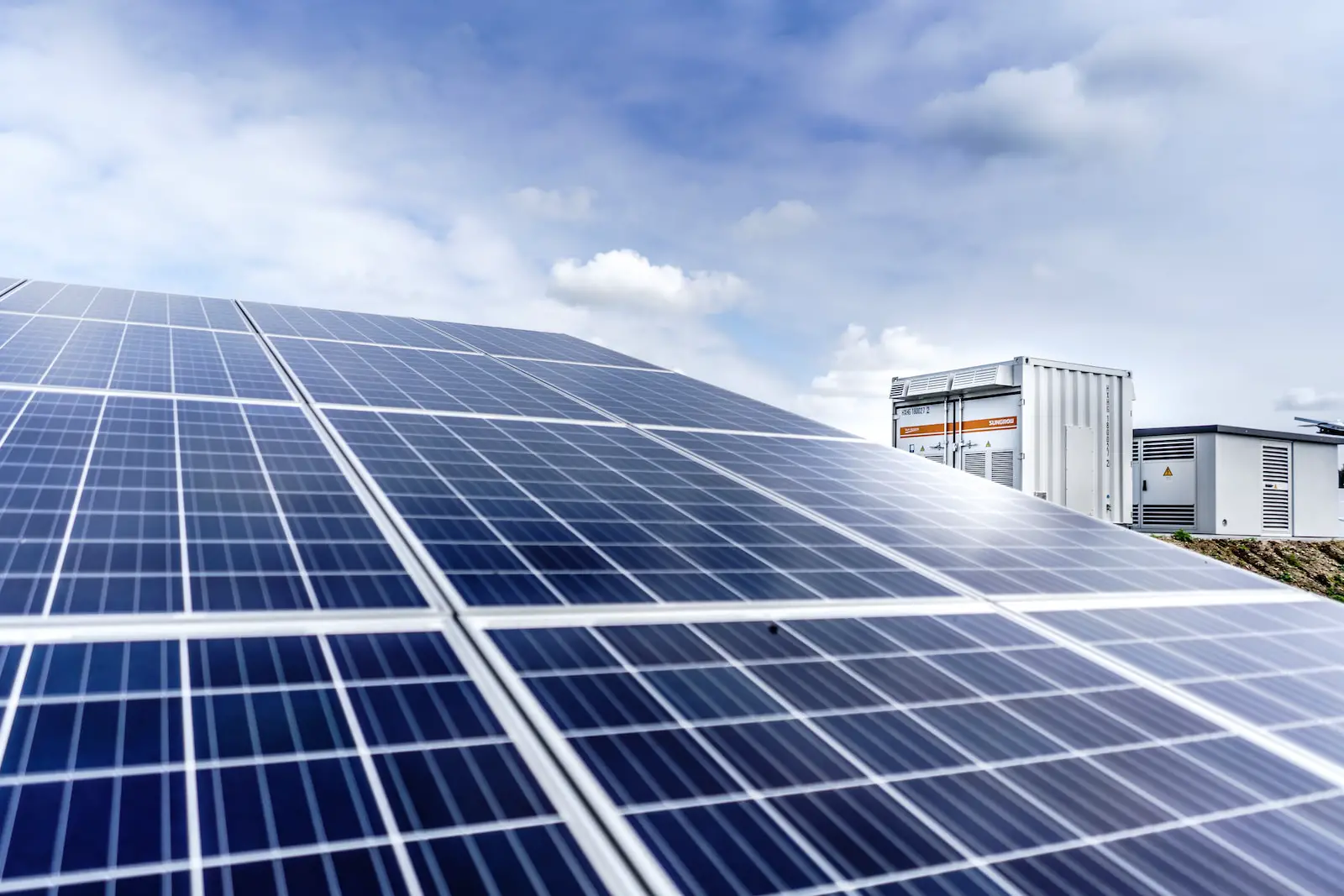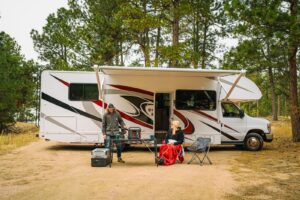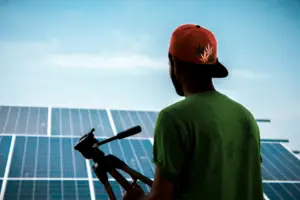As the world moves towards renewable energy sources, solar power plants have gained immense popularity as a clean and sustainable way to generate electricity.
However, setting up a solar power plant requires significant investment, which may not be feasible for everyone.
In such cases, getting a loan can be an excellent option to finance the project.
But navigating the loan application process for a solar power plant can be daunting, especially if you are new to the industry.
What Is a Solar Loan Program?
A solar loan program is a financing option designed to help homeowners and businesses finance the installation of solar panels and other renewable energy systems.
Solar loans typically offer competitive interest rates and flexible repayment terms, and they may be available through various lenders, including banks, credit unions, and specialized solar finance companies.
Solar loan terms and eligibility requirements vary depending on the lender and the program.
Still, generally, borrowers can expect to undergo a credit check and provide documentation related to their income and other financial factors.
Some solar loan programs may also require a down payment or offer deferred payment options to help make the upfront costs of solar installation more manageable.
One advantage of solar loan programs is that they allow borrowers to own their solar panel systems outright, which means they can take advantage of tax credits and other incentives only available to system owners.
Additionally, owning a solar panel system can help homeowners and businesses save money on their energy bills over the long term and in some cases, generate income through net metering programs.
How Much Loan Can I Get on Solar Plant?
The amount of loan you can get on solar plants depends on various factors.
Such as your credit score, income, debt-to-income ratio, and the type of financing option you choose.
Typical loan amounts are $1,000 to $100,000.
Solar loans are often available for the full cost of the solar panel installation.
However, the amount you are eligible for may depend on your creditworthiness and other factors.
For example, some lenders may require a minimum credit score or income level to qualify for a solar loan.
In contrast, others may have specific requirements for the type and size of the solar panel system you are installing.
Home equity loans or lines of credit may also be an option for financing a solar panel installation, and the amount you can borrow may depend on the equity in your home.
Property-assessed clean energy (PACE) financing is another option that may be available in some areas, and the amount you can borrow may be tied to the value of your property.
It’s important to shop around and compare the different financing options available to you.
As well as consider any government incentives or programs that may be available to help offset the cost of the solar panel installation.
By doing your research and working with experienced professionals, you can find the financing option that best meets your needs and helps you start saving money on your energy bills with clean, renewable solar power.
Ways to Get a Solar Loan
Many banks, credit unions, and specialty lenders offer solar loans specifically designed for financing solar projects.
These loans often have favorable terms and may include low interest rates, flexible repayment terms, and no prepayment penalties.
There are several ways to get a loan for a solar power plant, including:
Home equity loans or lines of credit: Homeowners can use the equity in their homes to finance a solar power plant by taking out a home equity loan or line of credit.
These loans may have lower interest rates than traditional solar loans, but they put your home at risk if you cannot make the payments.
Property-assessed clean energy (PACE) financing: PACE programs allow homeowners to finance energy-efficient upgrades, including solar installations, through a special assessment of their property taxes.
PACE financing is available in many states and may offer longer repayment terms than traditional loans.
Energy-efficient mortgages (EEMs): EEMs are a type of mortgage that allows homeowners to finance energy-efficient upgrades, including solar installations, into their mortgage.
EEMs are offered by many lenders and may offer lower interest rates than traditional mortgages.
Government programs and incentives: The federal government, as well as many state and local governments, offer a variety of programs and incentives to help homeowners and businesses finance solar projects.
Steps to Get a Solar Loan for a Solar Power Plant
Getting a loan for a solar power plant requires careful planning and research.
Here are some steps to follow:
1. Determine your financial requirements: Before applying for a loan, you should clearly understand your financial needs.
This includes the cost of equipment, installation, and ongoing maintenance.
You should also consider your expected revenue from selling electricity and any government incentives that may apply.
2. Research loan providers: Many lenders offer loans specifically for renewable energy projects.
Look for lenders that have experience in financing solar power projects.
Research different loan providers and compare their terms, interest rates, and repayment options.
3. Prepare your loan application: To apply for a loan, you must provide detailed information about your solar power plant project, including a business plan, financial projections, and the equipment you purchase.
Ensure you have all the necessary documents before you begin the application process.
4. Submit your application: Once you have prepared your loan application, submit it to the lender.
Be prepared to answer any questions they may have about your project.
Having a lawyer review the loan agreement before signing is also a good idea.
5. Monitor your project: After receiving your loan, monitor your project closely to ensure it is on track and within budget.
This will help you avoid any potential delays or cost overruns that could impact your ability to repay the loan.
Most Common Solar Finance Options
There are several ways to finance a solar project.
Here are some of the most common options:
1. Solar Loans: Solar loans are specifically designed for financing solar projects. These loans allow you to borrow money to purchase the equipment and installation services needed for a solar system. You then pay back the loan over time, typically with interest.
2. Power Purchase Agreements (PPAs): PPAs are agreements where a third-party investor finances the solar system installation and owns the equipment. They sell the energy the system generates to the property owner at a fixed rate. This arrangement allows the property owner to benefit from solar energy without upfront costs.
3. Solar Leases: Solar leases are similar to PPAs, but the equipment is not owned. This option can provide immediate energy savings without requiring the property owner to purchase or maintain the equipment.
4. Property Assessed Clean Energy (PACE) Financing: PACE financing is a program that allows property owners to finance energy-efficient upgrades, including solar installations.
5. Crowdfunding: Crowdfunding platforms allow individuals or groups to contribute money towards a solar project.
This option can be useful for small-scale solar installations or community solar projects.
How Much Money Is Required for a Solar Power Plant?
The cost of a solar power plant can vary depending on various factors, including the size of the system, the type of solar panels used, and the installation costs in your area.
On average, a residential solar power plant can cost anywhere from $10,000 to $30,000 or more, depending on the size of the system and other factors.
For commercial solar power plants, the costs can be much higher.
The cost per watt for a commercial solar power plant can range from $1 to $3, depending on the size of the system and other factors.
However, it’s important to note that many government incentives and financing options are available to help offset the cost of a solar power plant.
These may include tax credits, rebates, grants, and financing options like solar loans and property-assessed clean energy (PACE) financing.
By taking advantage of these incentives and financing options, you can significantly reduce the upfront cost of your solar power plant and start enjoying the benefits of clean, renewable energy.
What Is the Cost of a 10 MW Solar Power Plant?
The cost of a 10 MW solar power plant can vary depending on several factors, including the location, type of solar panels used, labor costs, and permitting fees.
However, a rough estimate for a 10 MW solar power plant cost is between $10-20 million USD.
This estimate includes the cost of solar panels, inverters, mounting structures, cables, and other equipment needed for installation.
It also includes the cost of labor for installation and maintenance, engineering and design costs, site preparation, and permitting fees.
It’s worth noting that the cost of solar technology has decreased rapidly in recent years, and this trend is expected to continue.
Additionally, government incentives and subsidies for renewable energy can help reduce the cost of installation.
Is Solar Project Profitable?
Solar projects can be profitable in general, but it depends on several factors such as location, installation cost, energy demand, and electricity rates.
The amount of sunlight a location receives is a crucial factor in determining the efficiency of solar panels.
Areas with more sunlight will generate more electricity and have a higher return on investment.
The cost of installation includes the cost of solar panels, inverters, mounting structures, and labor.
The cost of solar technology has decreased in recent years, making solar projects more financially viable.
What Is the Tenure of a Solar Loan?
The tenure of a solar loan can vary depending on the lender and the borrower’s preference.
Typically, solar loans have a repayment period ranging from 5 to 20 years.
The repayment period can be determined based on the amount borrowed, the interest rate, and the borrower’s ability to repay the loan.
Shorter loan tenures typically have higher monthly payments but lower interest rates, while longer loan tenures have lower monthly payments but higher interest rates.
Choosing a loan tenure suits your financial situation and cash flow is important.
It’s worth noting that some lenders may offer flexible repayment terms, allowing borrowers to make additional payments or prepay the loan without penalty.
This can help reduce the overall interest paid and shorten the loan tenure.
It’s important to carefully read and understand the terms and conditions of the loan agreement before signing.
It’s also good to compare loan options from different lenders to find the best terms and interest rates that meet your financial goals.
What Is the Interest Rate of Solar Loans in the USA?
The interest rate of a solar loan in the USA can vary depending on several factors, such as the lender, loan amount, loan term, credit score of the borrower, and prevailing market conditions.
The interest rate for a solar loan can be fixed or variable.
A fixed interest rate remains the same throughout the loan term, while a variable interest rate can change over time based on market conditions.
In general, the interest rates for solar loans in the USA range from 3% to 8%.
It’s important to shop around and compare loan options from different lenders to find the best interest rates and terms that meet your financial goals.
Additionally, government incentives and rebates for solar projects can help reduce the loan’s overall cost and improve the project’s financial feasibility.
Before applying for a solar loan, it’s important to review and understand the terms and conditions of the loan agreement, including the interest rate, repayment period, and any penalties or fees for prepayment.








